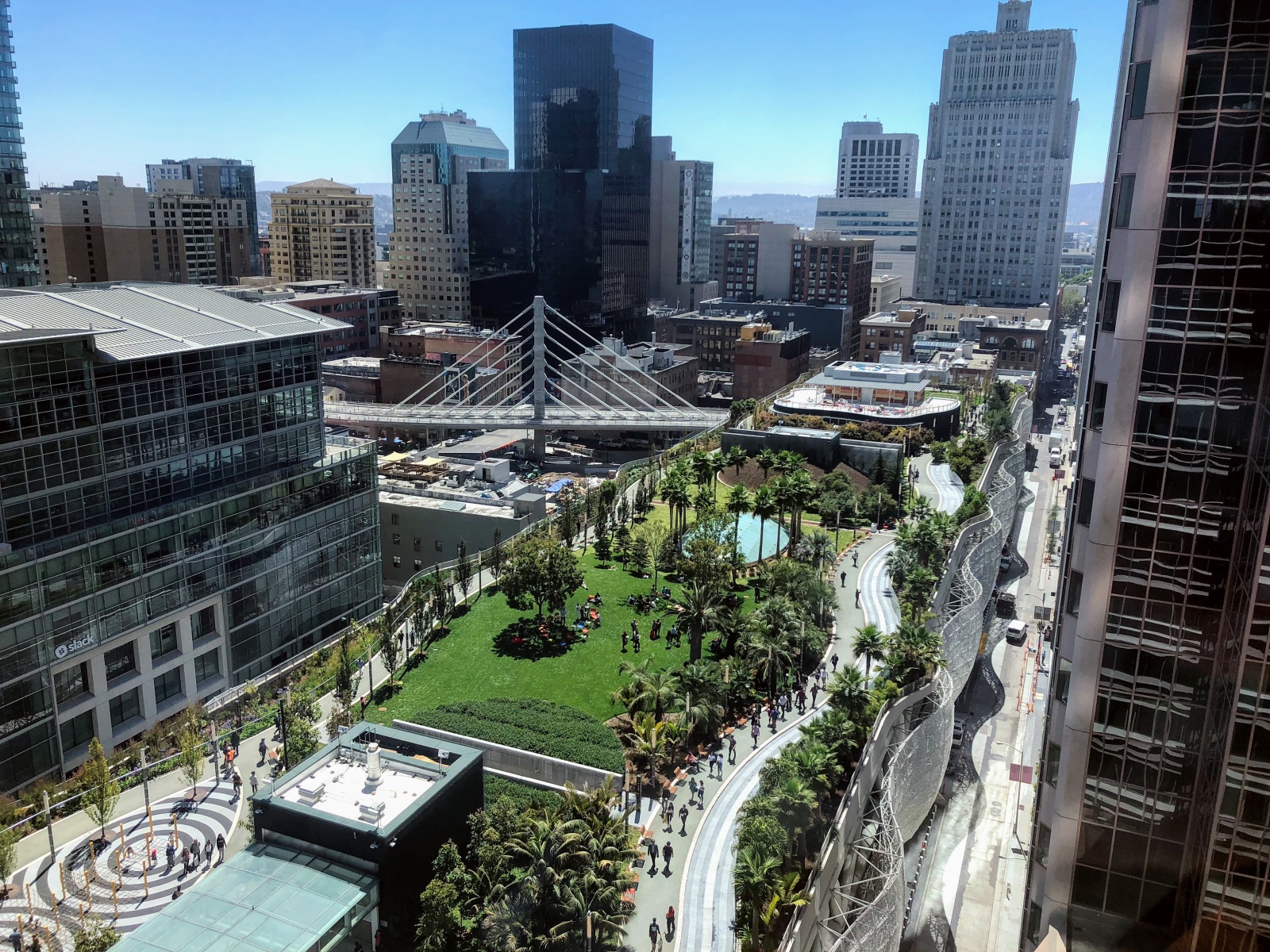Amid the megadrought, the worst drought to hit California in 1200+ years, we are now experiencing a Pacific storm with the terrifying name of a bomb cyclone. And while the atmospheric river it’s bringing with it sounds poetic, it’s anything but. This brutal storm is bringing heavy rains, damaging winds and subsequent flooding to parts of California.
In San Diego County, we’re experiencing rains and winds that may lead to major flood events in some areas. Over the last decade, flooding has caused millions of dollars in property damage, even in times of average seasonal rainstorms. (source: San Diego Co Public Works)
San Diego is a coastal desert. When rain falls, the streams of stormwater run down our roofs, plant beds and streets, causing more problems than bad driving.
This is where biophilic design becomes more than just a way of connecting people with nature. Utilizing plants and greenery in key areas can not only prevent property damage and save money on utility bills, but it can also help the environment when it rains.
Read more on biophilic design here
Let’s take a look at what happens with San Diego stormwater, and stormwater solutions – steps we can take to mitigate the consequences to our property and environment.
Why We Care
Roof and stucco damage in San Diego is a common sight after a storm. Heavy winds and rains send debris flying into the air, hitting buildings and homes.
Environmental pollutants caused by stormwater are less considered, but should be a concern for all of us. Pollutants build up on surfaces like rooftops, parking lots and streets over time. When it rains, stormwater sends oils, chemicals, cleaners, particles, trash, and more rushing down our streets.
Where does it all go? Down our city-maintained storm drains. The water flows into our rivers and streams, eventually into lakes and the Pacific Ocean. All the pollutants are carried along and end up in our waterways too. Imagine the effects on wildlife, marine life, water quality, and people who like to swim, surf, dive and fish.
What We Can Do
First, we can look to thoughtful, sustainable design stormwater solutions specifically for San Diego County. Second, we can change our own behavior.
Here are our top design tips for San Diego stormwater solutions:
- A Green Roof
A green roof is a beautiful way to bring nature to an urban area. A green roof can be a big investment, but it’s by far the best solution. Covered in greenery, it acts like a giant sponge, absorbing up to 90% of rainfall in the summer and up to 40% in winter. It also insulates, saving on heating and air bills.
A green roof can be installed at both commercial & residential locations. Good Earth Plants has installed many unique and beautiful green roofs, but the most unique may be at Sharp Hospital, where the design creates musical notes. From above, it’s the music to “Ode to Joy.” Check out that project and other green roofs in our portfolio.
- A Living Wall
An outdoor living wall is more cost effective than a green roof, and as you’d expect, it absorbs less rainfall. They are great for catching rainwater runoff and a big improvement over a flat, hard wall. They also add vibrancy to a San Diego outdoor sitting area. You may recognize this living wall we installed at Fashion Valley mall.
- Rain Barrels
Rain barrels are great for commercial and residential locations. One inch of rain on a 1,000 sq ft roof can produce 600 gal of rainwater. The harvested rainwater can then be used to water landscaping. The best part is that there are rain barrel rebates in San Diego. Check out info on San Diego County’s Dept of Public Works website to see if you qualify.
- Native Landscaping
Choose waterwise native landscaping plants that look great with little fertilization. They’ll be able to withstand drought, and when it rains, excess fertilizer won’t wash off into the storm drains and into our water.
- Residential & Commercial Gutters
While we may be tempted to turn our gutter spouts away from plants and soil where they may cause erosion, letting the water go straight onto the pavement and into the gutter is likely to collect pollutants as it flows and flood the stormwater drain.
What We Can All Consider
When it rains in San Diego, each of us can be a stormwater solution:
- If you see something, say something.
- Report irrigation runoff or storm drain pollution using San Diego’s Get it Done app or call (619) 235-1000.
- Don’t dump in storm drains
- Unfortunately, the storm drain system doesn’t filter the water before it goes into the ocean. Avoid pouring dirty water or anything you don’t want in the ocean in the storm drains. Taking your car to a car wash is a great way to not pollute our storm drains.
- Repair cars dripping fluids.
- If you have a beater dripping oil onto the driveway, it will wash into the storm drain when it next rains.
- Brooms, not hoses.
- Using a hose to clean hardscapes are water wasters and wash whatever’s on the surface right into the ocean via the storm drain. Get going and get behind a broom instead.
- Pick up dog poop.
- If you aren’t picking up Rover’s leftovers, imagine all the bacteria and other stuff washing into the waterways.
- Throw your trash and especially your cigarette butts into the proper containers.
- Anything on the ground is heading for our waterways. Cigarette butts are 1/3 of all debris collected in beach cleanups.
To continue receiving our blog, please make sure you sign up using this form on our Contact Us page.
For more San Diego stormwater solutions, use the form above or call us directly at (858) 576-9300.

